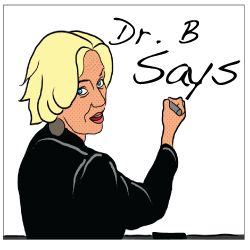 Planning a Program
Planning a Program
 |
Teaching is a profession that deals in large part with planning. Whether it is planning individual lessons, chapters, units, or entire years, teachers are always planning and are always looking ahead. Program planning is the greatest in scope; often program plans cover a 3-year span. Program planning is not an easy task, but rather one that requires time and careful consideration as to what will be taught in a program over the span of several years. In this section we will look at exactly what is a program plan, how it is different from lesson and unit planning, and how program planning can be done effectively. |
What is Program Planning?
Program Planning refers to arranging or setting up a second language program for a longer period of time. Typically, program plans cover three years of development in the subject area. For new teachers or experienced teachers starting at new schools, program planning might be a challenging process in the beginning. Let’s use the example of teaching in a junior high school (grades 7-9). By the end of one fully planned program cycle (i.e. by year three) the grade 7 students would have followed/been taught by the teacher for three years. In this way, planning for this group is made easier; as the students progress from one year to the next, the plan can be adapted over time as needed. Initial planning for the grade 8 and 9 classes may be more difficult at first, since they have had a different teacher and perhaps a completely different program, but again over time this will become easier for the teacher.
back to top
How is Program Planning different from lesson or unit planning?
As stated above, program planning involves looking at planning for a 3-year cycle of a language program. Essentially, program planning is looking at the “big picture” or, put another way, the “program” plan is the macro view of the planning process. Unit planning is smaller than program planning and lesson planning is even smaller still, being the most micro view of the planning process. Program planning requires the teacher or teachers involved to look ahead to the future and decide the direction in which the language program will go. In comparison to lesson and unit planning, which deal with meeting the Program of Studies, program planning deals with creating and working towards a vision.
back to top
What does effective Program Planning look like?
In some cases, individuals, such as the language-specific department heads, may plan programs or programs may be planned by groups of people. These groups may be composed of a department head and all teachers teaching the language, for example. If a group is planning the program, it is important for the group members to communicate openly about their ideas for the program. As the program plan deals with and acts on a vision, all parties involved need to be sure they are on the same page when it comes to what the program will look like. An effective program plan will vary from year to year; the teacher(s) involved must change and adapt the program for each year. When it comes to developing an effective and useable program, it is important to remember that the plan is not random, but rather it must be carefully created and followed through. Additionally, in order to ensure that the program is valuable and useful, those involved in its creation must be able to move beyond personal interest and desires and work towards creating a program that best meets the needs of the students.
When it comes to developing a 3-year program, the classroom resources need to be taken into account. Those people involved in the planning need to decide whether or not one series of textbooks will be used for each grade level, or if textbooks from different series should be used to meet the needs of the grades and students involved. For more information on selecting resources, click here.
 |
1. In your opinion, what does effective Program Planning look like? Draw a visual that links your ideas and demonstrates the relationships between everything that is needed to create an effective program. 2. Now, let's see what this teacher has created to explain her idea of effective Program Planning.
|


